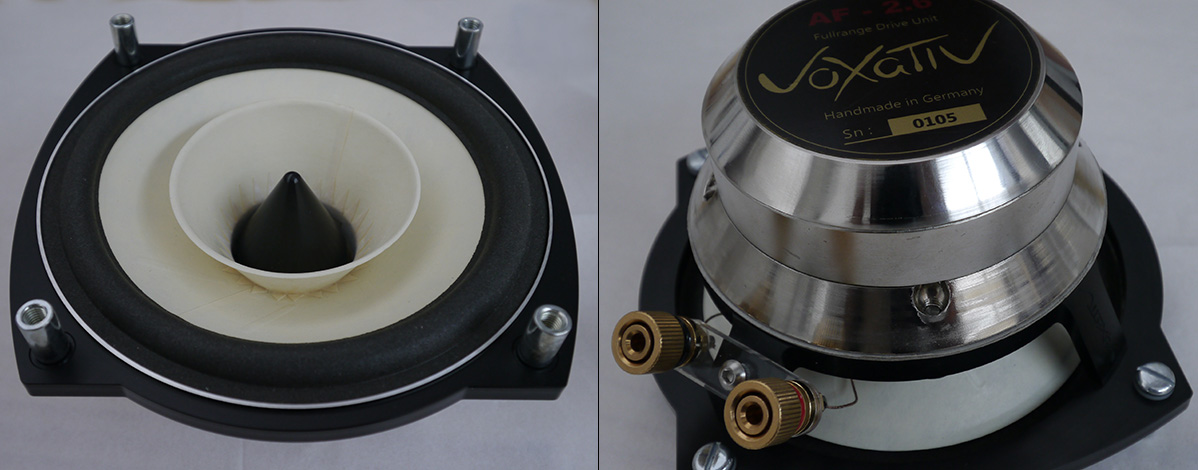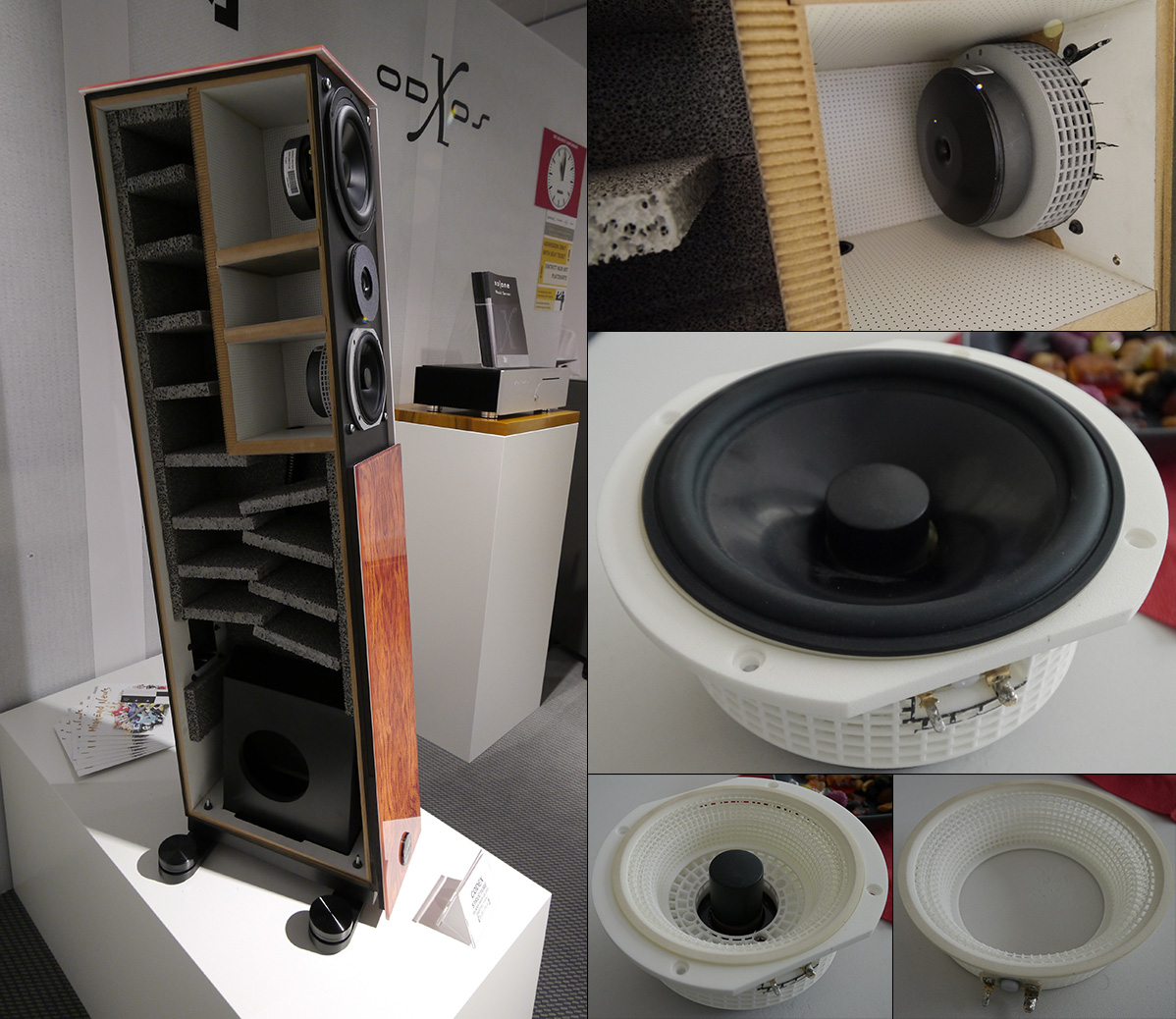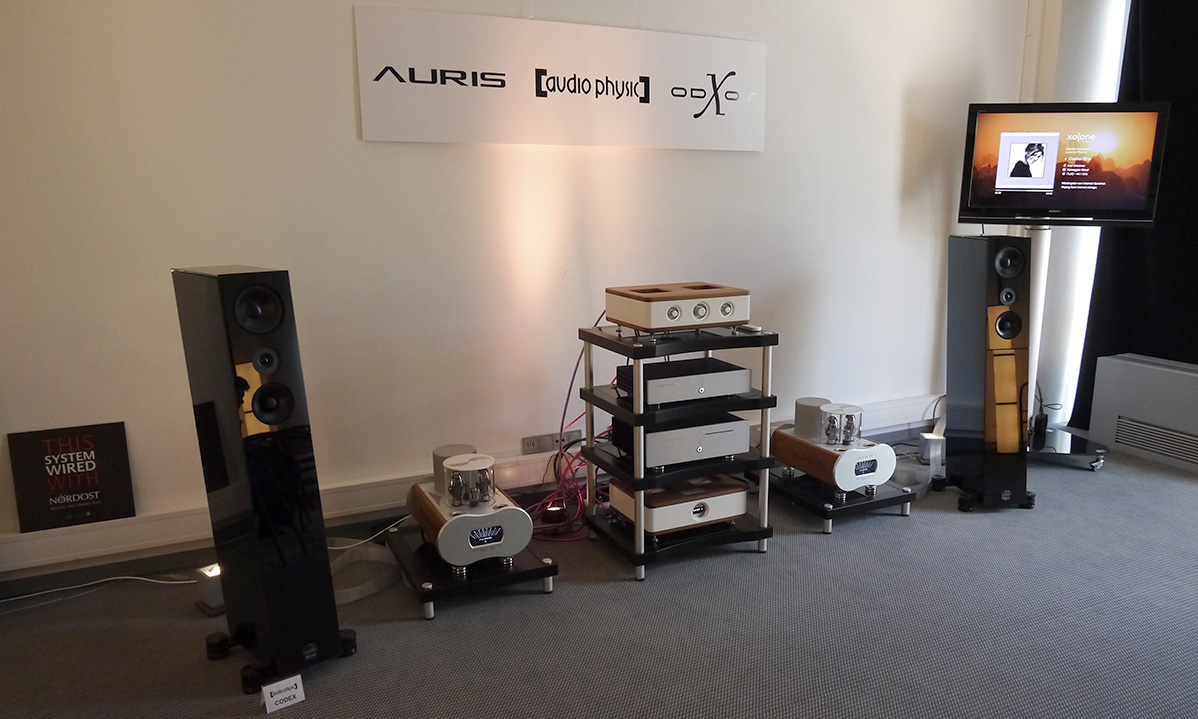
|
Sauna alley aka atrium 4.2 had a high number of rooms with speakers for the 0.1-percenters. Except for a few, I won't cover them. Not only are they irrelevant to the vast majority, they, like a Humvee, aren't something you even ought to aspire to; right tool for the job and all that. But, don't fault the manufacturers for fulfilling actual demand. A repeat conversation went to the effect of, "last year we showed our €40'000/pr flagship speaker as all anyone would ever need. We got no respect. This year we're showing €200'000/pr excess. Suddenly we have orders." It's the lack of realistic references and/or more money than sense which, amongst the nouveau riches and in certain markets, still shop the hifi sector for big-game trophies. That's just not our audience. To be sure, giving such products a mostly miss is no reflection on their potential performance. Some made fine sound. This league simply wasn't my focus or interest. Back to the real(er) world and stuff which captured my imagination.
|
|
Meet the Heco Blues Brothers. At right is the original Direkt reviewed in these pages. It's a throwback to the full-bore beefy two-ways of bygone times when woofers and car engines were big-block hemi types. The broad-shouldered shallow cab too turns modern conventions on their side. Being more successful than anticipated, Heco next scaled up their vintage recipe to the 15" 3-way called Dreiklang in the middle. That's trisound in German. This year, a prototype of the Einklang aka onesound had its debut. Below we see it on active rotation.
|
 |
Looking closer, the Direkt range's retro theme of Kraftpaper drivers just came to a peak in their new widebander made from the same material. I was shown a small sampling of four different whizzers which varied in profile/shape, height and whether they terminated in a flat, dome or cone throat. The engineering team around Shandro Fischer and Voxx Holdings GmbH of Germany had experimented extensively before finalizing their very own widebander. For that they deserve a shout-out. How many mainstream speaker firms can you name which bother exploring this route from scratch? And to not come to a peak, the down-ported Einklang relies on a compensation filter to linearize its response in the upper midrange/lower treble region. Fanciers of the breed, welcome a new option.
|
 |
On the same topic, here is Holger Adler's new 5-inch Voxativ widebander which can be had with various magnets and Qts ratings. It appears in their small Hagen monitor and Zeth tower.
|
 |
For example, if the Zeth is to be mated to the new H-frame dipole 96dB efficient Z-Bass active woofer, it can be fitted with a higher-performance version of this driver because now it no longer needs to reach much below 100Hz. If the Zeth is to be used full-range, that version driver wouldn't be suitable.
|
 |
Still on the custom driver subject, we get to my personally most relevant discovery of the event. Here 'personal' means exactly that. During its review, I'd identified Audio Physic's Codex as my future reference 4-way speaker just as soon as I could mobilize the funds this year. Reviewers are rich, remember? Like all the best-laid plans of mice and men, in Munich designer Manfred Diestertich threw me a curve ball with his prototype Codex Structure. It played with the Auris Audio tube monos and showed in gutted guise on static display. Prying eyes notice far more ceramic foam dampers plus a complete lining of the inner walls with the same porous materials plus a different structural brace material with perf bores plus a very different basket structure for the midrange over current production. The sum total of these mechanical upgrades is the reason for the model's suffix 'Structure'. The differences over the standard model are all structural.
|
 |
This prototype was too hot off the press to have a final sell price yet. The mid's twin basket had been 3D-printed from two different materials, the cabinet hand-assembled. The firm would have to establish streamlined production protocol to arrive at an acceptable assembly time. Mass-printing the basket would lower the initially very high per-unit cost. These were numbers for bookkeeping to crunch. Depending on math, my planned acquisition might experience quite a delay. Needless to say, my ambitions had been restructured. To demonstrate how far-reaching Manfred's curiosity in all things mechanical goes, I was shown...
|
 |
...a one-up 3D-printed CD ripper. During the show, Manfred offered to rip people's CDs to memory stick, then let them compare the sound between original and rip. I didn't have any CD on hand nor did I remember to buy one from M.A.Recording's Todd Garfinkle on the main floor, then return. Purportedly people who already made the comparison were flabbergasted. Manfred had no rational explanation except that he was no novice at this voodoo. A 1996 Stereoplay issue showed his earlier experiment with a denuded string-suspended cheap CD player—500 in then current Deutschmark currency—that had trounced the publication's reference machine. The green discs you see the ripper skeleton mounted on are the same string suspension washers which work in Audio Physic's magnetic footers as used for the active pair below. To condense this far lengthier discussion, I'll just say what a pleasure it was to chat with Mr. Diestertich and learn how his mind works. If you thought that Audio Physic were one of those established staid brands where nothing of note happens anymore... think again. Behind their attractively glass-ensconced facades, these speakers do a number of things quite differently than expected. These Germans simply aren't as loud about their innovations as Magico and YG Acoustics are on about theirs.
|
 |
Etalon of Germany too skinned their drivers differently. Here we see their unusually large tweeter as mounted in their flagship speaker, then a raw driver with its cast bell-bronze basket, Neomax motor, paper diaphragm and leather suspension.
|
 |
They had even flown in their favoured conductor for a formal presentation, the essence of which was in the earlier video link. Whilst highly admirable an approach—to use their own recording gear to create classical reference recordings, then the actual conductor to gauge his live podium sound against their playback—I'm not convinced that it makes the ideal thrust for their promotional campaign. Celebrity endorsements for hifi don't work. But time will tell. Demoing with classical exclusively however will certainly not be a reference for most listeners. Team Etalon should probably expand their musical horizons. What a sound though. As Martin Gateley of soundkaos put it, "visions of vintage Salabert".
|
 |
Making the rounds, I ran into Simon Kwangli Lee, formerly of April Music, now heading his own Simon Audio Lab. He had brought a prototype of his new back-to-basics integrated amplifier (50wpc, 3 inputs, no remote) which will sell for ~€1'200. With it he promised a new circuit concept and refinements over his prior Stello equivalent. He also has a monitor and floorstanding speaker in development and a DAC and CD transport on the books. Having reviewed a number of his previous products, I have high respect for this man's ability to produce excellent results from value-priced kit for sane people. I pre-booked a review once he is up and running with an English website and formal production.
|
 |
From the playbook's same page of value came the new Soekris converters dac1321/€460, dac1421/€735 and dac1541|€1'110 shown. Known for their OEM R2R sign-magnitude boards with SMD precision resistors—one of these showed up in these review pages with LessLoss Echo's End converter, another in the LampizatOr Atlantic—the Swedes around Søren Kristensen now had launched turn-key models which separate only by number of i/o, headphone facility and whether they're balanced or not.
|
 |
The fully loaded model achieves a claimed 27-bit resistor precision, has coax, BNC, AES/EBU, Toslink and USB inputs and RCA/XLR analog outputs plus a 6.3mm headfi port with 6.5Vrms and 1.5Ω output impedance. With discrete resistor-ladder DACs from Aqua, Aries Cerat, Etalon, MSB, Rockna, TotalDAC & Co. gaining in popularity but priced in the higher echelons, the three all singing all dancing Soekris sistahs should be most welcome new options.
|
 |
On the subject of Aqua Hifi, their marketing manager Stefano Jelo had left the company to pursue his own amplifier dreams. It was too early to learn the name of his new operation.
|

|

|
|